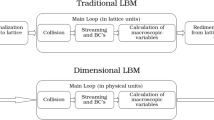Abstract
A mathematical model of landfill gas migration was established under presumption of the effect of gas slippage. The slippage solutions to the nonlinear mathematical model were accomplished by the perturbation and integral transformation method. The distribution law of gas pressure in landfill site was presented under the conditions of considering and neglecting slippage effect. Sensitivity of the model input parameters was analyzed. The model solutions were compared to observation values. Results show that gas slippage effect has a large impact on gas pressure distribution. Landfill gas pressure and pressure gradient considering slippage effect is lower than that neglecting slippage effect, with reasonable agreement between model solution and measured data. It makes clear that the difference between considering and neglecting slippage effect is obvious and the effects of coupling cannot be ignored. The theoretical basis is provided for engineering design of security control and decision making of gas exploitation in landfill site. The solutions give scientific foundation to analyzing well test data in the process of low-permeability oil gas reservoir exploitation.
Similar content being viewed by others
References
Chen Y C, Chen K S, Wu C H. Numerical simulation of gas flow around a passive vent in a sanitary landfill [J]. Journal of Hazardous Materials,2003,100(1/3):39–52.
Ham R K. Field Testing for Evaluation of Landfill Gas Yields Landfilling of Waste: Biogas [M]. Sponpress, London, 1996, 297–315.
Estes R K, Fulton P F. Gas slippage and permeability measurements [J]. Trans AIME, 1956, 207(3):338–342.
Chen Daixun. Gas slippage phenomenon and change of permeability when gas flow in tight porous media [J]. Acta Mechanica Sinica,2002,34(1):96–100 (in Chinese).
Collins R E. Liquid Flows in Porous Media[M]. Chen Zhongxiang, Wu Wangyi (transls). Oil Industry Press, Beijing, 1981 (Chinese version).
Young A. The effects of fluctuations in atmospheric pressure on landfill gas migration and composition [J]. Water, Air, and Soil Pollution, 1992,64 (5):601–613.
Rathfelder K, Yeh W W-G, Mackay D. Mathematical simulation of soil vapor extraction systems: model development and numerical examples [J]. Journal of Contaminant Hydrology, 1991,22(8): 263–297.
Douglas E Metcalfe, Grahame J Farquhar. Modling gas migration through unsaturated soils from waste disposal sites [J]. Water, Air, and Soil Pollution, 1987,32(2):247–259.
Lu A H, Kuntz C O. Gas-flow model to determine methane production at sanitary landfills [J]. Environmental Science and Technology,1981,15(2):305–316.
Chen Jiajun, Wang Hongqi, Wang Jinsheng, et al. Numerical model of landfill gas migration and its application [J]. Acta Scientiae Circujstantiae,2000,20(3):327–331 (in Chinese).
Xue Qiang, Liang Bing, Liu Xiaoli. Research of unsteady seepage coupling mathematical model and gas migration in landfill [J]. Rock and Soil Mechanics,2002,23(2): 191–195 (in Chinese).
Klinkenberg L J. The permeability of porous media to liquid sand gases[A]. In:Drilling and Production Practice[C]. American Petroleum Institute, Washington}, 1941,200–213.
Sampath K, Keighin C W. Factors Affecting Gas Slippage in Tight Sandstones of Cretaceous Age in the Uinta Basin[R]. JPT,1982,2715–2720.
Kaluarachchi J J, Parker J C. Modeling multicomponent organic chemical transport in three-fluid-phase porous media [J]. Journal of Contaminant Hydrology, 1990, (5):349–374.
Basnev K C, Vlasov A M, Koqina NH, et al Underground Fluid Mechanics[M]. Zhan Yongyu, Zhao Bihua (transls). Oil Industry Press, Beijing}, 1992 (Chinese version).
Chien Weizang. Application of Singular Perturbation Theory in Mechanic[M]. Science Press, Beijing}, 1981, 186–191 (in Chinese).
Wang Yongjie, Wang Changjie, Gao Jiabi. A research of gas slip in low permeability porous media [J]. Acta Petrolei Sinica,1995,16(3):101–105 (in Chinese).
Author information
Authors and Affiliations
Corresponding author
Additional information
Communicated by LI Jia-chun
Project supported by the National Natural Science Foundation of China (No. 50309015); the Major State Basic Research Development Program of China ( 973 Program) ( No. 2002CB412708); the Sunshine Young Project in Wuhan City of China (No. 20055003059-33); the Open Fund of State Professonal Lab of Geological Hazard Prevention and Engineering Geological Environment Protection (No. GZ2004-011)
Rights and permissions
About this article
Cite this article
Xue, Q., Feng, Xt. & Liang, B. Slippage solution of gas pressure distribution in process of landfill gas seepage. Appl. Math. Mech.-Engl. Ed. 26, 1623–1633 (2005). https://doi.org/10.1007/BF03246272
Received:
Revised:
Issue Date:
DOI: https://doi.org/10.1007/BF03246272




